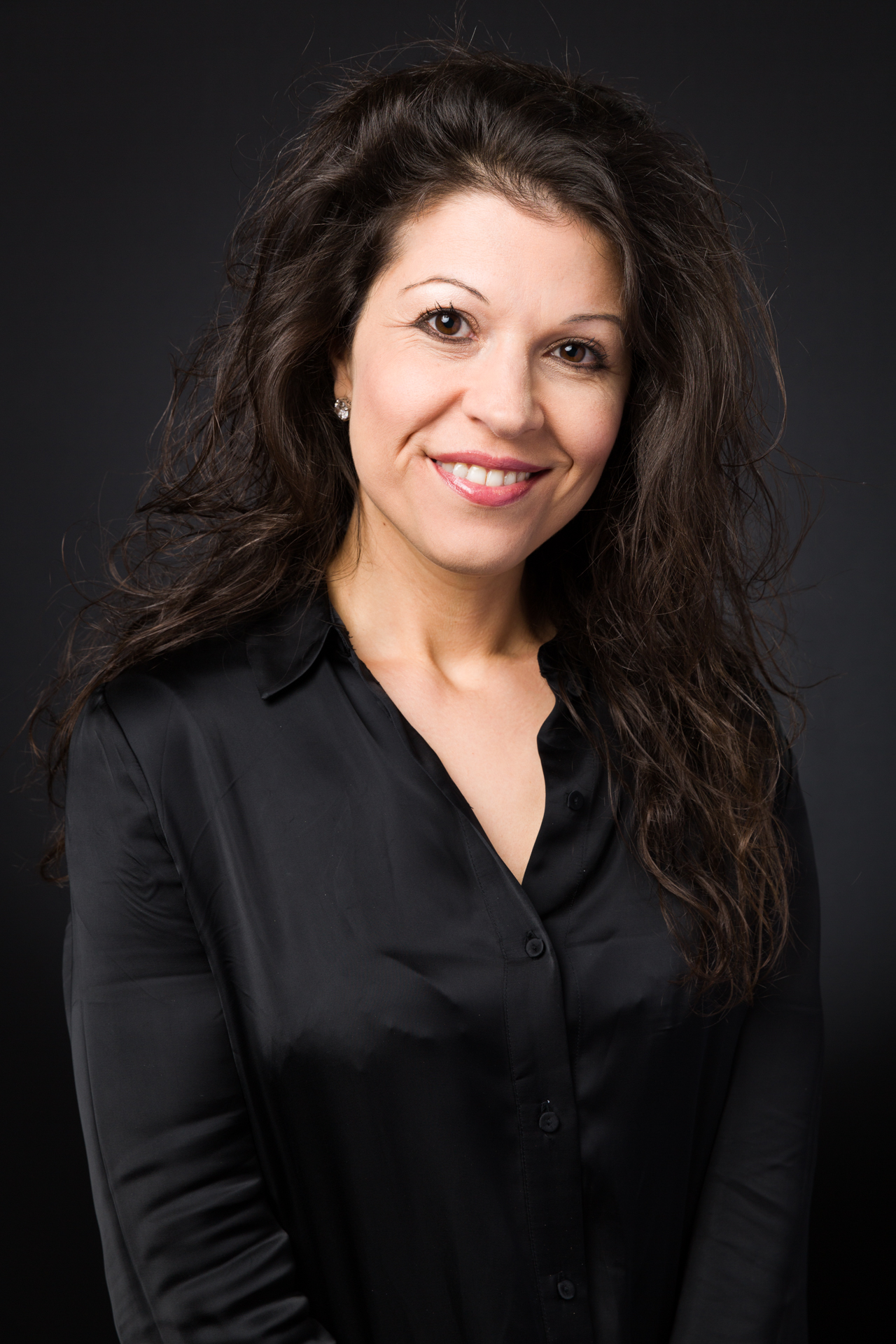Alumni Profile | Where the patient experience meets technology for better healthcare outcomes
Yvonne Peros is using her lived and working experience and her AGSM MBA to help shape the evolution of healthcare and create better patient outcomes.
Yvonne knows the ins and outs of the healthcare system intricately. She has been caring for her mother who has multiple sclerosis (MS) from a young age and has seen the successes and failures of the system firsthand.
“Growing up, I spent a lot of time in hospitals and in specialist medical clinics with my mother. I saw her receive excellent care in many instances. But I also saw how fragmented and inconsistent the public health system can be. And there was huge potential to get diagnosis and treatment wrong because of poorly designed systems, waiting periods, and flaws in information sharing between clinicians in chronic care cases.”
This experience ignited a curiosity in Yvonne about how she could make a difference in people’s lives.
“There are so many people living with a chronic disease and it's the way that we deliver healthcare that will make a difference for them. I wanted making that difference to be at the core of what I was doing,” she said.

In her career as a psychologist, she spent years helping people manage their mental health. But the more Yvonne learned about the healthcare system, the more she wanted to make a system-wide impact.
“When you scaffold that knowledge over years and years, the desire to ‘fix the system’ gets stronger and stronger. Especially as we learn about digital and tech solutions that can relieve that system and make the patient experience safer and of a better quality,” said Yvonne.
So, she shifted her focus from helping one patient at a time to expanding her impact across the entire industry by working in various large scale healthcare organisations and in roles that help streamline systems and processes to improve patient care.
Yvonne applied her decades of knowledge, first-hand experience and AGSM @ UNSW Business School MBA (Executive) to revolutionise the healthcare system and elevate patient experiences first in her role as User Insights Lead for the Single Digital Patient Record (SDPR) project at eHealth NSW, and now as Manager, Strategy & Planning for the NSW Health Agency for Clinical Innovation where she works with a team to address how NSW Health will action the Future Health Strategy 2022-2032.
Exploring the potential of technology in healthcare
Australia’s healthcare system is incredibly complex. And with an ageing population, inequity in access to care across the country and evolving patient expectations, its challenges are multilayered.
But Yvonne saw the potential of digital technology in simplifying some of this complexity.
“Technology can help speed up time to diagnosis and treatment for patients. It can create health equity across the country, and help health sites, doctors and patients share health information safely, quickly and easily. It can also help increase accuracy in diagnostics and give patients options based on how acute their care needs are,” she shared.
During her time at global healthcare company, Novartis between 2018 and 2022, Yvonne saw the impact of technology on patient experience first-hand. As the Healthcare Solutions Partner, she worked with hospitals on piloting a point-of-care ultrasound for faster heart failure diagnosis.
“Typically, a heart failure patient can wait hours in ED or days on a ward for formal diagnosis, and sometimes they are sent home from the hospital without the diagnostic test. Not getting treated properly can cause them to deteriorate further and be readmitted.”
But with the handheld ultrasound device, patients could be scanned in minutes to see if there are physiological signs of heart failure. If there are, patients can be referred for formal diagnostic testing faster. Once they receive a formal diagnosis, they start medication and feel better much faster, Yvonne said.
“When patients feel better they can go home, where they can be more comfortable and recover faster. Our pilot program showed that patients who were scanned with the ultrasound were diagnosed and treated faster, compared to patients who were not; and some went home much earlier than usual, with one pilot site noting an average reduction of four days in length of stay. This also opened beds in emergency and wards for other patients, relieving pressure for the hospital.”
Shaping the healthcare evolution
Yvonne first learned about the potential of digital technology to improve patients’ lives at Pearson Clinical Assessment in 2012. As the Product Manager of Cogmed, an evidence-based digital brain training program for people with cognitive difficulties, she helped practitioners in Australia and New Zealand embrace one of the first neuro-cognitive digital health technologies helping improve patient outcomes.
But Yvonne knew that if she wanted to make a real impact in the sector she would need to round out her experience in the field with in-depth commercial understanding.
“I wanted to build my knowledge of large, complex business operations, strategic leadership, financial practices, and I especially wanted to learn how to innovate, grow and transform an industry that is typically very resistant and slow to change,” she explained.
So in 2016, she enrolled in an MBA Executive at AGSM. On top of the commercial perspective she was keen to build, Yvonne also learned invaluable skills she has used in all her roles since.
“The MBA developed my ability to confidently engage with a diverse range of stakeholders, including executive leaders, because I can understand how their business works, and what their responsibilities and priorities are from a systems perspective. I would say this is the most valuable outcome of the MBA that has positively impacted my career to date,” she said.
Unifying a siloed health system in NSW
In her role with NSW Health's digital agency, eHealth, Yvonne worked on arguably one of the most complex healthcare projects in NSW – replacing more than 25 separate patient data and information management systems with one Single Digital Patient Record (SDPR) platform.
She says currently, healthcare staff have to access multiple systems for a comprehensive patient history because clinical patient information exists in different locations across various health systems.
“This takes up an enormous amount of time for our frontline staff, which can lead to delays in patient care, human error and steps skipped due to understaffing and patient overload.”
SDPR will revolutionise how medical practitioners, hospitals and patients will access medical records, leading to more accurate diagnosis, better treatment and improved patient experiences and outcomes. Yvonne’s role in developing how this system would be implemented was manifold – from extensive user research and project planning to recruitment and workforce strategy and planning.
The skills Yvonne gained during the Innovation course of her AGSM program were vital in her work on the SDPR Program. Her knowledge of analytics means she understands the language around the technology, while the co-design principles she learned have helped her ensure all the right voices were heard during the development stage when engaging clinicians regarding their needs and concerns prior to implementation.
Once the SDPR had officially launched, Yvonne shifted her focus to managing people through a huge change process.
“I applied design and UX methodology to the creation and design of the extensive suite of SDPR communications across various channels and audiences. I also regularly tap into my Strategic Leadership, Managing People & Organisations, and Agile Organisations principles from AGSM to help people understand and navigate the change.”
Once SDPR has been implemented across all NSW hospitals, its impact will be felt by everyone.
“Patients won’t have to repeat themselves over and over again. From a taxpayer and a hospital’s perspective, there will be a significant reduction in the duplication of testing - significantly reducing costs. Admin staff and doctors will save enormous amounts of time and clinical flow will greatly improve. We’ll see faster care, faster diagnosis, faster treatment, and patients going home faster.”
Putting patients at the centre
Yvonne has dedicated her career to helping improve patient care and experience. And now, with the help of digital technology, she’s set to continue to shape the evolution of healthcare in NSW.
“Diagnosing and treating patients faster and more accurately is something that can always be improved, but hospital and medical staff don’t have the time to make this happen a lot of the time, as their priority is servicing and treating patients. So collaborating with specialist clinical staff and technology-led business teams to make it happen in a safe, standardised, affordable way is a win for everyone.”
Ready to take that next step? Find out about AGSM’s MBA (Executive) Program and AGSM @ UNSW Business School.
This article was originally published on the UNSW Business Faculty website.








